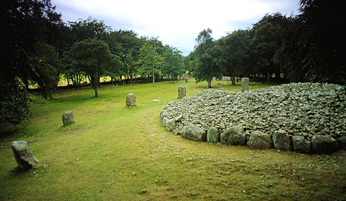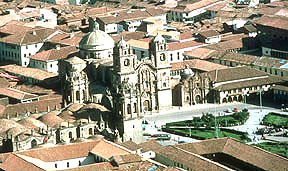Some Useful Definitions
There are a few terms which we use a lot
when trying to understand the sky:
Latitude is a way of
describing where you are on the Earth between the equator and the
poles. If you're latitude is 45° North, then you are halfway
between the equator (latitude = 0°) and the north pole
(latitude=90°).
The horizon is the plane which defines the half of
the sky that you can see.
Altitude is the angle between the object you are
looking at and your horizon.
The ecliptic can refer to many slightly different
ideas which all relate to the Earth's orbit. The plane in which the
Earth goes around the Sun is called the ecliptic. The ecliptic is
also an imaginary line in the sky along which the Sun appears to
travel as the Earth goes around the Sun. The path of the ecliptic
determines the zodiacal constellations; they are all constellations
through which the Sun appears to move as the Earth goes around the
Sun.
You might also be interested in:

People have been living in North America for a long, long time. The first people to live there were the Native Americans. They didn't have clocks or calendars so they watched tides, the Sun, the Moon,
...more
Man has always observed the sky. By watching the Sun and Moon, early man could tell what season was coming next. They had to know this to be able to farm and hunt. Archeoastronomy started in the 1960's
...more
The stones of Carnac, France, are very famous because there are a lot of them and because they are so old! The oldest stones found in Carnac are from about 4,500 B.C. That's older than the stones at Stonehenge!
...more
You may have heard of the lake called Loch Ness, where people think they've seen the Loch Ness monster. Near Loch Ness there are three giant stone tombs you may not have heard of...they are called the
...more
Cuzco is a city in Peru. It was the capital of the ancient Inca Empire. In ancient times, Cuzco was the center of the Inca road network which was made up of about 40,000 kilometers (25,000 miles) of roads
...more
The stone rings and tombs of England and France are very famous. But, there are also stone structures in Italy. There are some neat stones in Fossa, Italy. They are standing stones. These stones form circles
...more
Kepler realized that the line connecting the planet and the Sun sweeps out equal area in equal time. Look at the diagram to the left. What Kepler found is that it takes the same amount of time for the
...more














